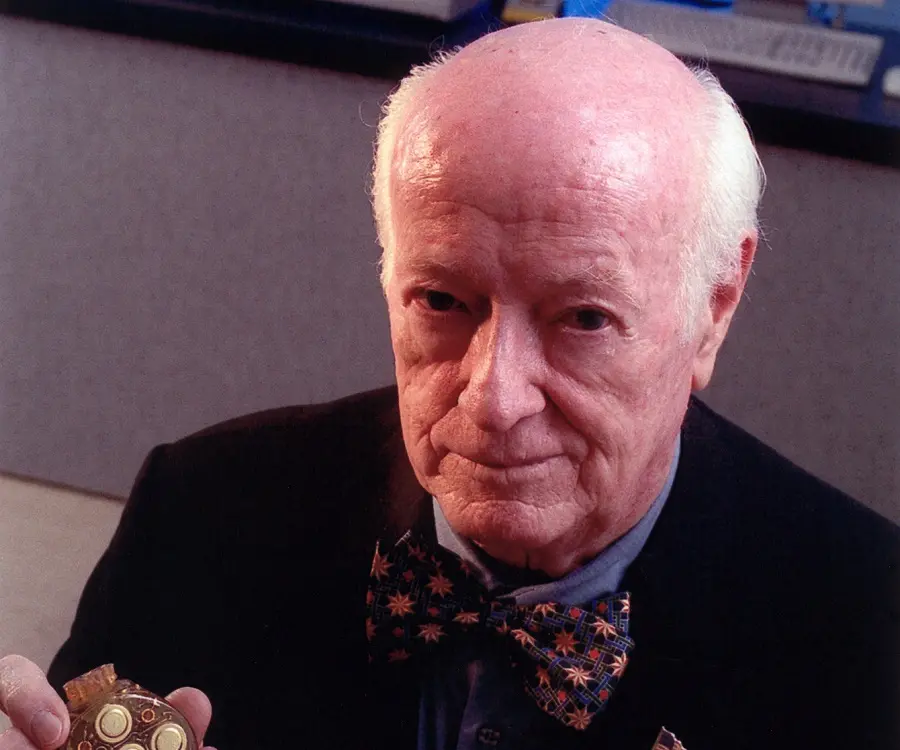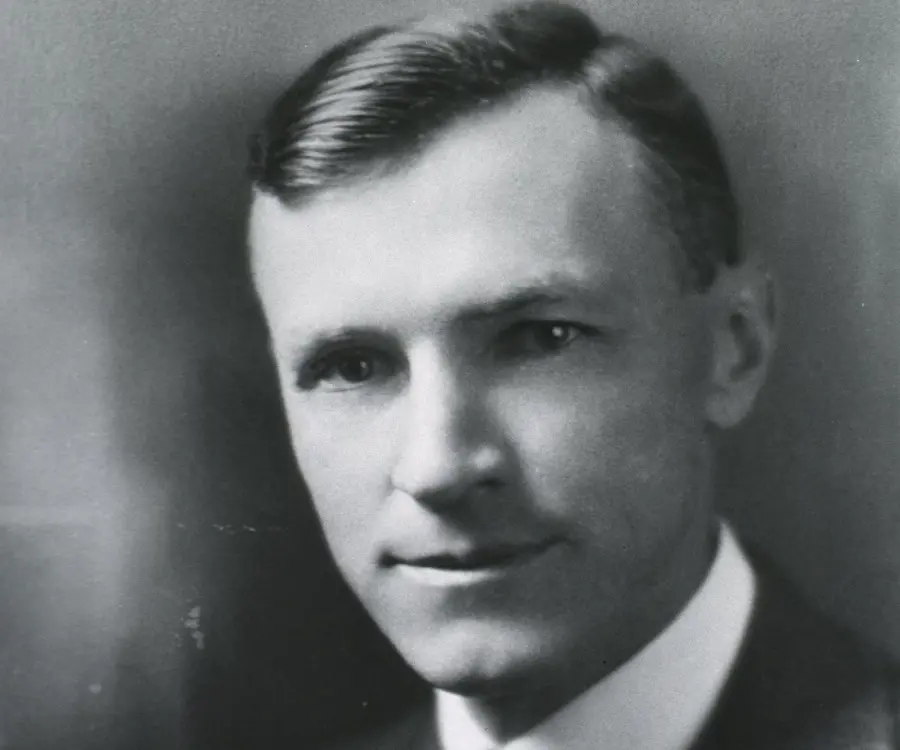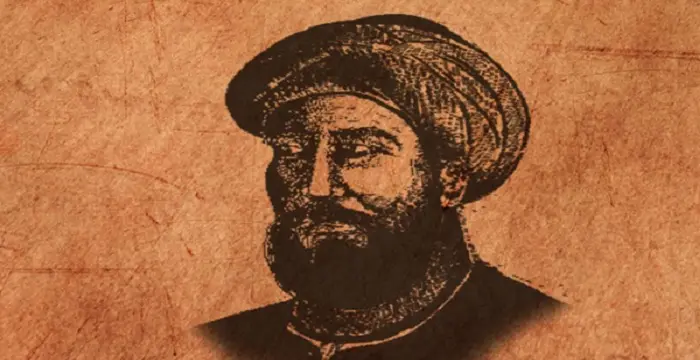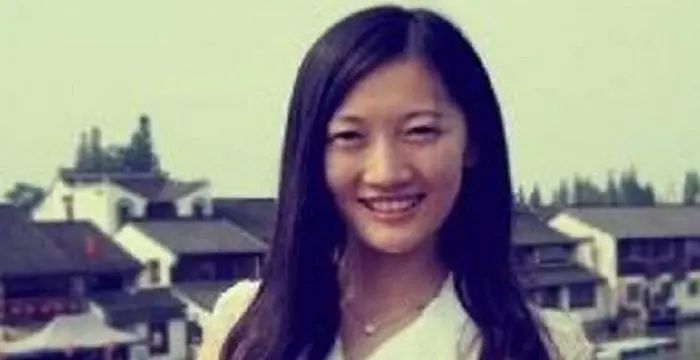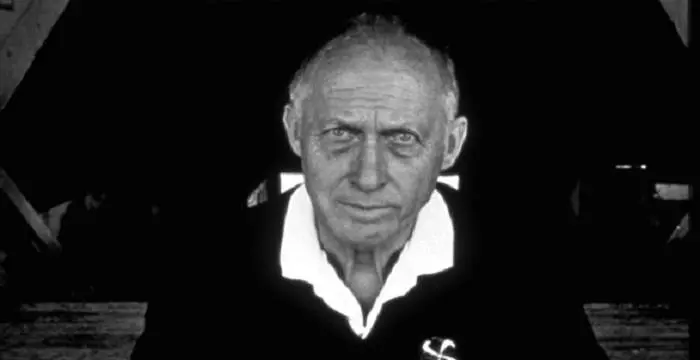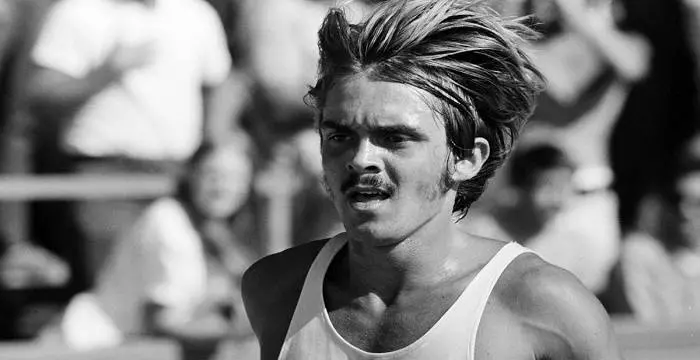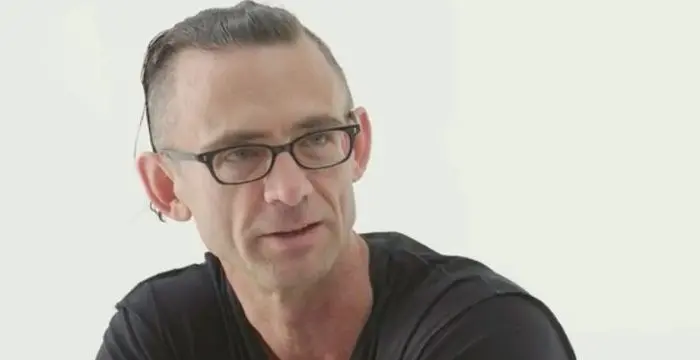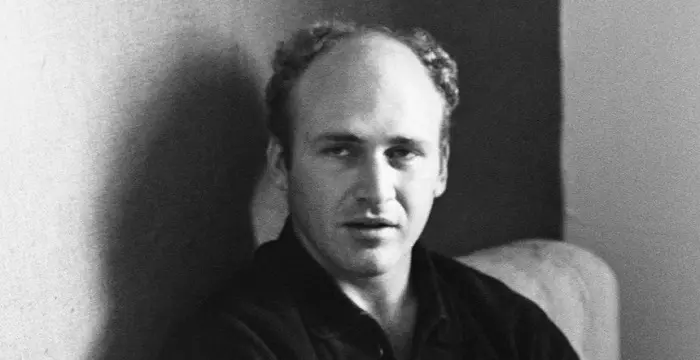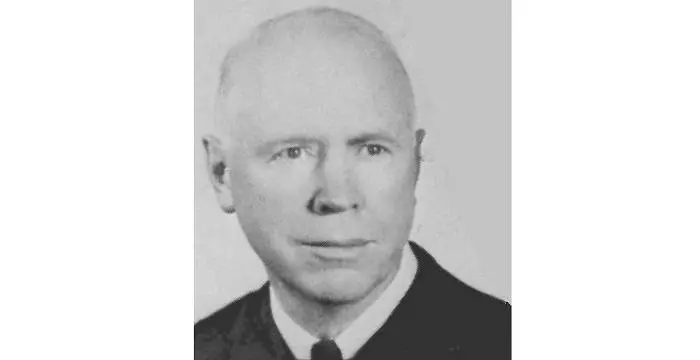
William P. Murphy - Scientists, Facts and Personal Life
William P. Murphy's Personal Details
William Parry Murphy was a renowned American physician who won the Nobel Prize in Medicine in the year 1934
| Information | Detail |
|---|---|
| Birthday | February 6, 1892 |
| Died on | October 9, 1987 |
| Nationality | American |
| Famous | Harvard University, University Of Oregon, Physicians, Scientists, Physicists |
| Known as | William Parry Murphy, Dr. William Murphy |
| Childrens | William P. Murphy Jr. |
| Universities |
|
| Notable Alumnis |
|
| Birth Place | Stoughton |
| Gender | Male |
| Sun Sign | Aquarius |
| Born in | Stoughton |
| Famous as | Physician |
| Died at Age | 95 |
// Famous Physicists
Henry Cavendish
Henry Cavendish was a theoretical chemist and physicist, renowned for discovery of hydrogen and calculation of the mass of earth. To know more about his childhood, profile, timeline and career read on
Walter Kohn
Nobel Laureate Walter Kohn was an Austrian-born American theoretical chemist and physicist. Check out this biography to know about his childhood, life, achievements, works & timeline.
Nikola Tesla
Nikola Tesla was a Serbian-American inventor, best known for his development of alternating current electrical systems. This biography of Nikola Tesla provides detailed information about his childhood, life, achievements, works & timeline.
William P. Murphy's photo
Who is William P. Murphy?
William Parry Murphy was a renowned American physician who, along with George Richards Minot and George Hoyt Whipple, won the prestigious Nobel Prize in Physiology or Medicine in the year 1934 for their combined “discoveries concerning liver therapy in cases of anaemia”. Interested in practicing medicine, he was initially unable to afford medical studies and had to take up teaching profession for a couple of years to fund his medical school tuition fees. When he failed to continue the funding, a chanced scholarship from Harvard fulfilled his dream of becoming a doctor. While practicing as a Physician at Peter Bent Brigham Hospital, he began his work (in collaboration with Minot and Whipple) on pernicious anaemia and its treatment by means of a diet of uncooked liver. The treatment demonstrated a sharp increase in red blood cell count, first in animals and later in anaemic human patients. Their ground breaking discovery turned out to be a major advancement in medical science as the previously untreatable and fatal disease turned into a curable malady, thus saving thousands of lives. Their research further led to the discovery of vitamin B12 therapy. Amidst the research work, he also taught at Harvard University till 1958, after which he retired.
// Famous Physicians
Al-Zahrawi
Al-Zahrawi, was an illustrious medieval Arab Muslim physician and surgeon. Check out this biography to know about his childhood, family life, achievements and interesting facts about him.
Jabir Ibn Hayyan
Jabir Ibn Hayyan was a medieval era polymath. Check out this biography to know about his life, works and achievements.
Maria Montessori
Maria Montessori was a physician and educator who developed the approach of Montessori education. This biography of Maria Montessori provides detailed information about her childhood, life, achievements, works & timeline.
Childhood & Early Life
William P. Murphy was born on 6 February 1892, at Stoughton Wisconsin, U.S.A. to Thomas Francis Murphy and Rose Anna Parry.
In his growing years, he attended the Wisconsin and Oregon public schools. Later in 1914, he received his A.B. degree from the University of Oregon.
Career
Although he was interested in medicine, William P. Murphy did not have enough funds for the medical school. Hence from 1914 to 1916, he served as a high school teacher of physics and mathematics, saving money for medical studies.
With his saved funds, he finally took admission at the Medical School of the University of Oregon, at Portland. At the same time, he also acted as a laboratory assistant in the Department of Anatomy. Unfortunately, his funds ran short after only a year of study, forcing him to quit the course.
From 1917 to 1918, he spent two years in the US army. As luck would have it, he chanced upon an unusual Harvard fellowship sponsored by a former student, William Stanislaus Murphy, who particularly wanted to fund “collegiate education of men of the name of Murphy.”
This fund became instrumental in helping him complete his medical studies. He received the scholarship for the next three years and graduated as a Doctor of Medicine from Harvard Medical School, Boston in 1922.
After becoming Doctor, Murphy spent a couple of years at Rhode Island Hospital as House Officer and then became Assistant Resident Physician at Peter Bent Brigham Hospital. After one and a half year of service, he was appointed Junior Associate in Medicine at the same hospital.
During this period, he did general research on diabetes mellitus and other blood diseases. His work on anaemia, especially pernicious anaemia was particularly noteworthy.
While researching anaemia, he discovered that when a large amount of raw liver was ingested, it refurbished red blood cells more rapidly than other foods. He teamed up with Dr. George Richards Minot and George Hoyt Whipple who then chemically segregated the remedial substance.
The research further revealed that iron in the liver was responsible for curing anaemia caused from bleeding. After successful animal testing, the raw liver diet treatment was experimented on people with pernicious anaemia.
Successful testing on humans led to the discovery of an active ingredient which was a water-soluble extract, containing a new substance. Chemists eventually isolated Vitamin B12 from this extract.
Since pernicious anaemia was until then an incurable and fatal disease, the awareness that uncooked liver and its extracts could be a treatment turned out to be a major advancement in medicine.
Thereafter, from 1928 to 1935, he was Instructor in Medicine at Harvard. For their groundbreaking discovery, he was awarded (along with Minot and Whipple) the Nobel Prize for Physiology or Medicine in 1934.
From 1935 to 1938, he was Associate in Medicine at Harvard. He wrote ‘Anaemia in Practice: Pernicious Anemia’ in 1939.
From 1948 to 1958, he was Lecturer in Medicine at Harvard. In 1958, he became Senior Associate and finally, the Emeritus Lecturer in Medicine at Harvard. He also served as the consulting haematologist to several hospitals.
Major Works
In 1924, his research on pernicious anaemia led to the discovery of a treatment for the disease (that was previously untreatable and fatal). The treatment involved the intake of large quantities of uncooked liver, rich in iron. Further investigation revealed vitamin B12 as a therapy for anaemia.
Awards & Achievements
Along with George H. Whipple and George R. Minot, William Murphy won the prestigious Nobel Prize in 1934 in Physiology or Medicine “for their discoveries concerning liver therapy in cases of anaemia”. Together with Minot, he also won the Cameron Prize of the University of Edinburgh, in 1930.
In 1934, he also won the Bronze Medal of the American Medical Association and the First Rank of Decoration - Commander of the Order of the White Rose, Finland.
He received the National Order of Merit, Cuba in 1952. He was also a member of several medical and allied societies in the USA and abroad, including the Deutsche Akademie der Naturforscher Leopoldina.
Personal Life & Legacy
William P. Murphy married Pearl Harriett Adams, a descendant of US President John Adams and the first licensed female dentist in Massachusetts, on 10 September 1919.
The couple’s son, William P. Murphy Jr. grew up to be a renowned physician. Their only daughter, Priscilla Adams was interested in aviation but unfortunately expired young in a plane crash in 1936.
He died on 9 October 1987 at Brookline, USA.
// Famous Harvard University
Bertil Gotthard Ohlin
Bertil Gotthard Ohlin was a famous Swedish economist. This biography profiles his childhood, family life & achievements.
Xi Mingze
Xi Mingze is the daughter of Chinese Leader Xi Jinping, Check out this biography to know about her birthday, childhood, family life, achievements and fun facts about her.
Susan Sontag
Susan Sontag is an American critical essayist, cultural analyst, novelist, political activist, filmmaker and playwright of international repute. Read on to find out more about her childhood, career, profile and timeline.
William P. Murphy's awards
| Year | Name | Award |
|---|---|---|
Other | ||
| 0 | Nobel Prize in Physiology or Medicine | |
William P. Murphy biography timelines
- // 6th Feb 1892William P. Murphy was born on 6 February 1892, at Stoughton Wisconsin, U.S.A. to Thomas Francis Murphy and Rose Anna Parry.
- // 1914In his growing years, he attended the Wisconsin and Oregon public schools. Later in 1914, he received his A.B. degree from the University of Oregon.
- // 1914 To 1916Although he was interested in medicine, William P. Murphy did not have enough funds for the medical school. Hence from 1914 to 1916, he served as a high school teacher of physics and mathematics, saving money for medical studies.
- // 1917 To 1918From 1917 to 1918, he spent two years in the US army. As luck would have it, he chanced upon an unusual Harvard fellowship sponsored by a former student, William Stanislaus Murphy, who particularly wanted to fund “collegiate education of men of the name of Murphy.”
- // 10th Sep 1919William P. Murphy married Pearl Harriett Adams, a descendant of US President John Adams and the first licensed female dentist in Massachusetts, on 10 September 1919.
- // 1922This fund became instrumental in helping him complete his medical studies. He received the scholarship for the next three years and graduated as a Doctor of Medicine from Harvard Medical School, Boston in 1922.
- // 1924In 1924, his research on pernicious anaemia led to the discovery of a treatment for the disease (that was previously untreatable and fatal). The treatment involved the intake of large quantities of uncooked liver, rich in iron. Further investigation revealed vitamin B12 as a therapy for anaemia.
- // 1930 To 1934Along with George H. Whipple and George R. Minot, William Murphy won the prestigious Nobel Prize in 1934 in Physiology or Medicine “for their discoveries concerning liver therapy in cases of anaemia”. Together with Minot, he also won the Cameron Prize of the University of Edinburgh, in 1930.
- // 1934In 1934, he also won the Bronze Medal of the American Medical Association and the First Rank of Decoration - Commander of the Order of the White Rose, Finland.
- // 1936The couple’s son, William P. Murphy Jr. grew up to be a renowned physician. Their only daughter, Priscilla Adams was interested in aviation but unfortunately expired young in a plane crash in 1936.
- // 1952He received the National Order of Merit, Cuba in 1952. He was also a member of several medical and allied societies in the USA and abroad, including the Deutsche Akademie der Naturforscher Leopoldina.
- // 9th Oct 1987He died on 9 October 1987 at Brookline, USA.
// Famous University Of Oregon
Bill Bowerman
Bill Bowerman was an American track and field coach, winner of the Oxford Cup and co-founder of the Nike, Inc. Check out this biography to get detailed information on his life.
Phil Knight
Phil Knight is the co-founder of Nike, Inc., one of the world's largest suppliers of athletic shoes and apparel. This biography of Phil Knight provides detailed information about his childhood, life, achievements, works & timeline
Steve Prefontaine
Steve Roland "Pre" Prefontaine was a renowned American middle and long-distance runner. This biography profiles his childhood, family, personal life, career, etc.
Chuck Palahniuk
Charles Michael ‘Chuck’ Palahniuk is a low key American author and freelance journalist, renowned for his award winning novel ‘Fight Club’. This biography profiles his childhood, life, writing career, achievements and timeline.
Ken Kesey
Ken Kesey was an American author, best known for the novel, ‘One Flew Over the Cuckoo’s Nest’. Explore this biography to learn more about his profile, childhood, life and timeline.
Kaitlin Olson
Kaitlin Olson is an American actress known for her role in the program ‘It's Always Sunny in Philadelphia’. Check out this biography to know about her childhood, family life, achievements and fun facts about her.
William P. Murphy's FAQ
What is William P. Murphy birthday?
William P. Murphy was born at 1892-02-06
When was William P. Murphy died?
William P. Murphy was died at 1987-10-09
Where was William P. Murphy died?
William P. Murphy was died in Brookline
Which age was William P. Murphy died?
William P. Murphy was died at age 95
Where is William P. Murphy's birth place?
William P. Murphy was born in Stoughton
What is William P. Murphy nationalities?
William P. Murphy's nationalities is American
Who is William P. Murphy childrens?
William P. Murphy's childrens is William P. Murphy Jr.
What was William P. Murphy universities?
William P. Murphy studied at Harvard University,University Of Oregon, University of Oregon, Harvard University, Harvard Medical School
What was William P. Murphy notable alumnis?
William P. Murphy's notable alumnis is Harvard University, University Of Oregon
What is William P. Murphy's sun sign?
William P. Murphy is Aquarius
How famous is William P. Murphy?
William P. Murphy is famouse as Physician



